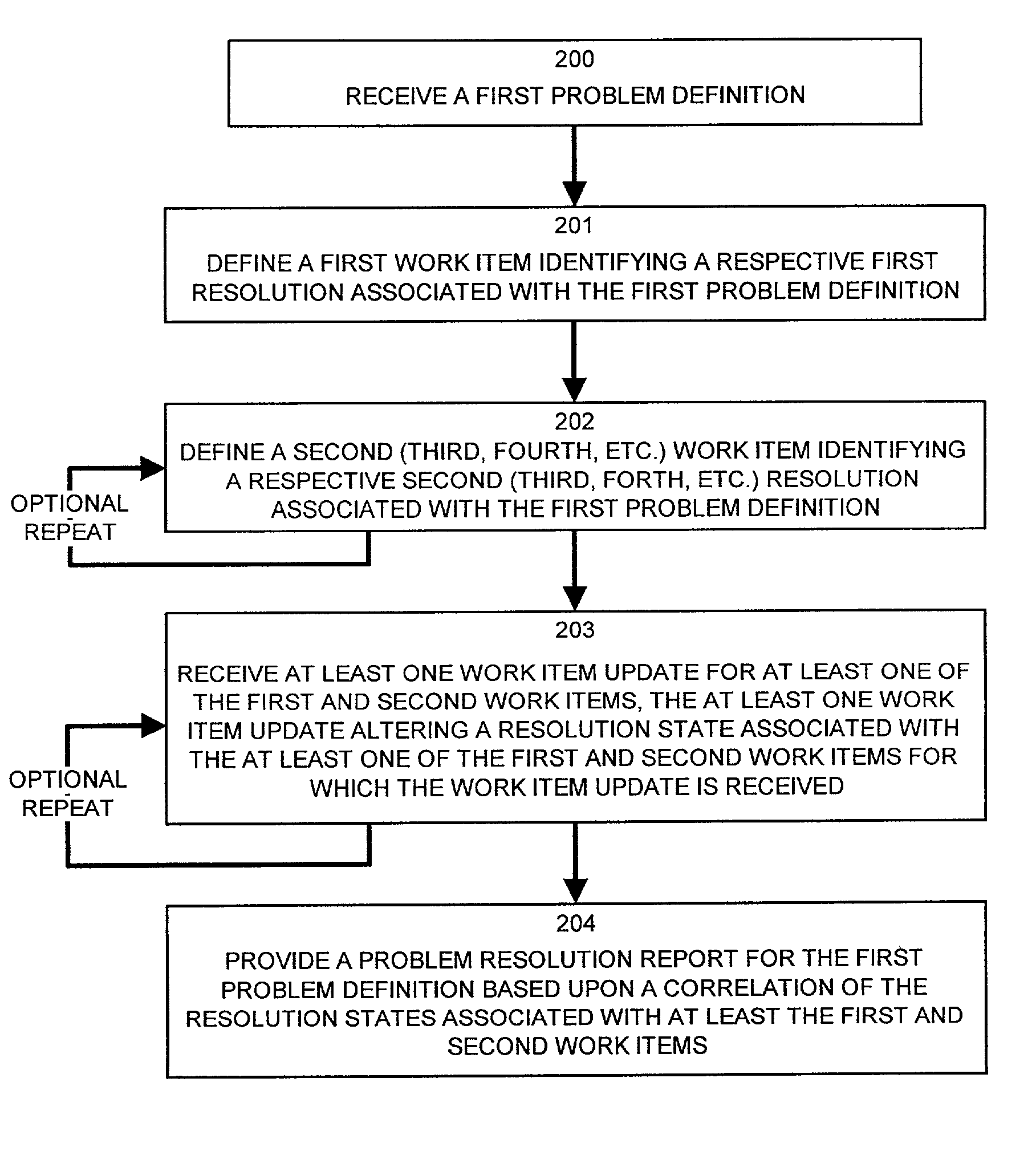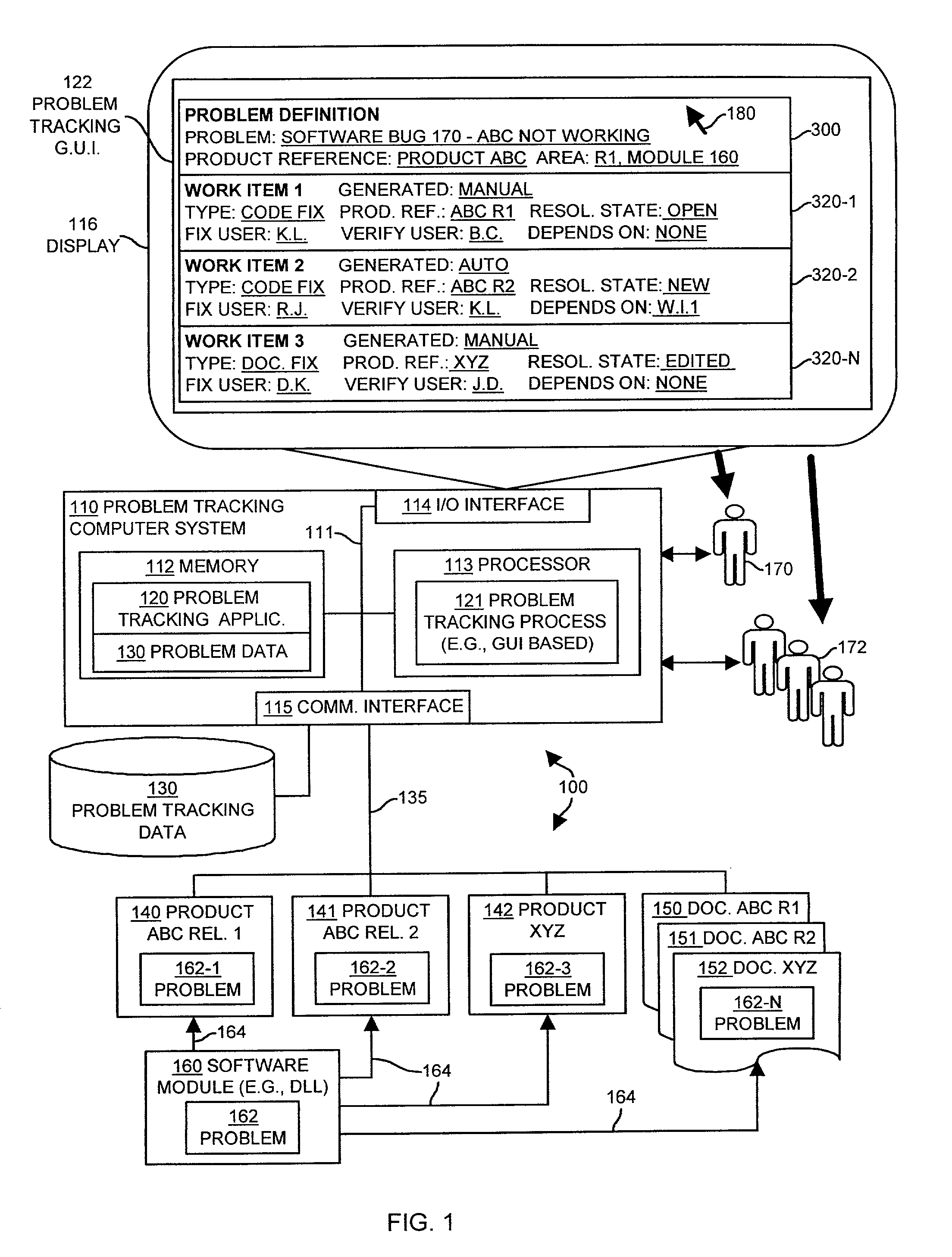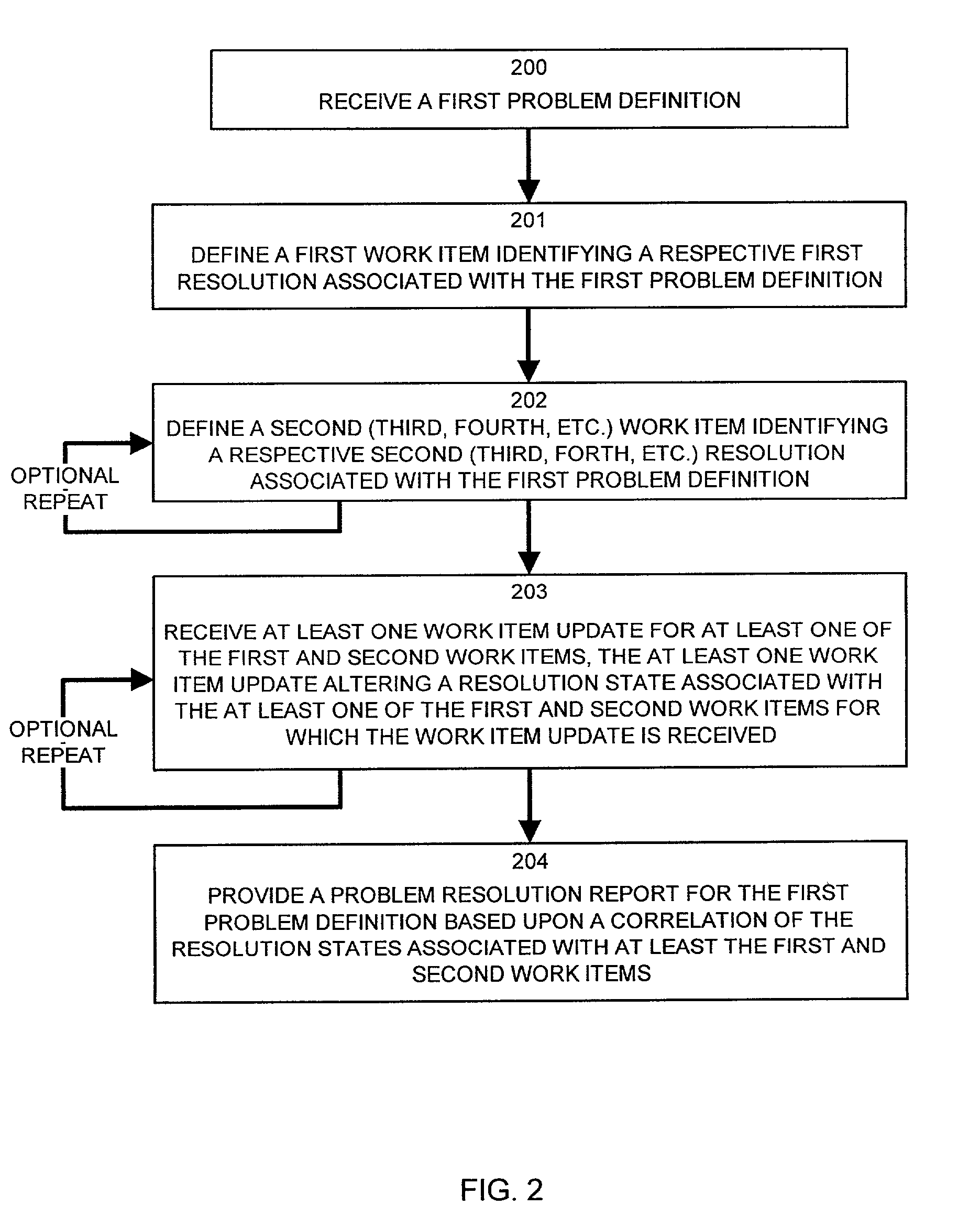Methods and apparatus for tracking problems using a problem tracking system
a problem tracking and problem technology, applied in the field of problem tracking systems, can solve the problems of multiple products produced by the organization, problems such as defect, problem or bug, and the inability of conventional problem tracking software applications to formally associate a single single, and achieve the effect of problems, and reducing the number of problems
- Summary
- Abstract
- Description
- Claims
- Application Information
AI Technical Summary
Benefits of technology
Problems solved by technology
Method used
Image
Examples
Embodiment Construction
[0031]Embodiments of the invention generally provide a problem tracking and reporting system capable of tracking the resolution of multiple problems across multiple product areas. The system can receive a problem definition and can associate the problem definition to multiple work items that represent resolutions to the problem definition in different product areas. As an example, a user of the problem tracking system of embodiments of this invention can enter a problem definition that reflects a description of a bug in a software product. The software product may have multiple versions, some of which have been released for commercial use, and others which are in various phases of development and / or test. In relation to this problem definition, the user can define work items that represent the appearance or occurrence of the problem in a specific product area. The system uses each work item to track the resolution status or state of that work item for that product area. The resoluti...
PUM
 Login to View More
Login to View More Abstract
Description
Claims
Application Information
 Login to View More
Login to View More - R&D
- Intellectual Property
- Life Sciences
- Materials
- Tech Scout
- Unparalleled Data Quality
- Higher Quality Content
- 60% Fewer Hallucinations
Browse by: Latest US Patents, China's latest patents, Technical Efficacy Thesaurus, Application Domain, Technology Topic, Popular Technical Reports.
© 2025 PatSnap. All rights reserved.Legal|Privacy policy|Modern Slavery Act Transparency Statement|Sitemap|About US| Contact US: help@patsnap.com



